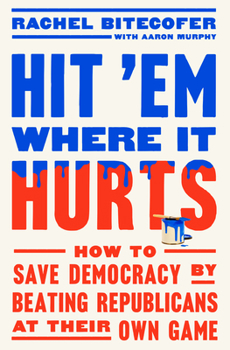You may have heard the story, a couple days back, about a Republican legislator in Michigan posting a photo of buses at the Detroit Metropolitan Airport, claiming the buses were transporting “illegal invaders.” News stories politely suggested that he was erroneously referring to undocumented immigrants—after all, Representative Matt Maddock is still in the Michigan House—before confirming that the buses were, in reality, transporting four men’s basketball teams competing in this weekend’s Sweet 16 and Elite Eight games in Detroit.
Was Maddock (whose wife, Meshawn, was recently Co-Chair of the beleaguered Michigan Republican party) simply misinformed? Doubtful that he was hanging around a major metropolitan airport (which is not, by the way, in his district), watching planes and buses come and go, and simply, you know, got the wrong impression about a few dozen young men—tall ones– getting on buses.
Nor has he apologized for what might have been a dangerous trigger, inviting local yahoos to saddle up and head for the airport. In fact, he’s continued to post:
“We know this is happening. 100,000’s of illegals are pouring into our country. We know it’s happening in Michigan. Our own governor is offering money to take them in! Since we can’t trust the #FakeNews to investigate, citizens will. The process of investigating these issues takes time. The whole nation knows about the Democrat illegal invasion human trafficking criminal enterprise. Why does the media only work to cover it up?”
Welcome to Detroit, college athletes.
Back in the day, as part of what used to be called a ‘unit,’ my 7th grade English teacher, Alison Olding, taught us the difference between misinformation (when you think you know something, but it’s wrong) and disinformation (when you deliberately plant known falsehoods). There were plenty of examples to share with a group of 7th graders, back then, and now. Spreading misinformation in middle school (a daily occurrence) is always wrong, but making stuff up to harm someone else is a special kind of reprehensible.
And yet, here we are, hip-deep in AI deepfakes and college professors hosting far-right websites protecting “the American way of life” and government interventions to suppress social media and—God help us—Russian disinformation about their insatiable, immoral war in Ukraine:
“The strategy that matters most for the Kremlin is not the military strategy, but rather the spread of disinformation that causes the West to back away and allow Russia to win. That disinformation operation echoes the Russian practice of getting a population to believe in a false reality so that voters will cast their ballots for the party of oligarchs. In this case, in addition to seeding the idea that Ukraine cannot win and that the Russian invasion was justified, the Kremlin is exploiting divisions already roiling U.S. politics.”
Kinda makes you wonder: Didn’t any of the Republican congressmen on the pro-Putin side learn about misinformation and disinformation in school? How to sort out fact from fiction? How to research questions around information that may or may not be true—and how to accurately evaluate sources that may be biased, or flat-out lying?
It’s a serious and critical education question. There are, indeed, public schools where media literacy is a formal part of the curriculum. There are outstanding digital literacy resources for students, supported by high-quality research. What’s missing is the will and the urgency of the need to educate kids about distinguishing between truth and whatever it is they’re getting on TikTok.
Or, unfortunately, at their kitchen tables or their church or on the bus. Misinformation—can you remember Things You Used to Believe?—has always been a factor in growing up and becoming educated. Disinformation is a darker thing altogether. Especially when it comes from people who should, theoretically, represent integrity. Legislators, for example.
Discussing this with one of my favorite cyber-colleagues, Barth Keck, he said: I teach these very strategies in my Media Literacy class. Sadly, I fear most adults nowadays – including the people on this platform – lack the patience or interest in employing them. I just discussed this point with a colleague who teaches Speech & Debate. He’s seeing kids parrot talking points rather than thinking deeply about issues. Whom are they parroting? Many adults are a lost cause; it’s the kids who need to learn to think critically.
A short piece in the Michigan Advance made this point simply: Disinformation makes our communities less safe. We are not powerless in this plight. Disinformation pulls apart our communities, and community itself is key to fighting back.
Even when it’s uncomfortable or not neighborly or involves a guy you may have enthusiastically voted for, once. When someone is spreading disinformation—even if it’s disinformation that faintly echoes your beliefs about the southern border, federal lawmakers or who deserves a handout—it’s wrong, and they need to be called out. For the sake of your school and community.
Disinformation IN schools is often disinformation ABOUT schools. All of those laws nominally designed to “protect” students from things that make folks uncomfortable—like classroom discussions about lynchings or honest talk in health class about sexual preferences—only open the door for students to absorb misinformation and disinformation when they don’t get the truth in school.
Here’s a heartbreaking and lethal example. My school used to offer, as part of community education, a hunter safety class. You had to be a certain age, produce appropriate licensing, learn about (and be tested on) the safe use of firearms, including keeping them secured when not in use.
Michigan is a hunting state. Opening Day in deer season is often a school holiday. We weren’t thinking about guns as evidence of masculinity or patriotism—or revenge. Our parents weren’t giving us handguns as an early Christmas present. Our legislators weren’t posing with the whole family carrying assault weapons. That’s the disinformation part.
From a piece on the 2022 school shooting in Oxford, MI:
What’s particularly hypocritical here is that the most strident defenders of this [gun] culture skew conservative and talk a lot about what isn’t appropriate for children and teenagers. What they think is inappropriate often includes educating kids about sex, about the fact that some people are gay or transsexual and about racism. It’s a perverse state of affairs: Exposing children to simple facts is dangerous but exposing them to machines designed to kill is not. You can’t get your driver’s license until you’re a teenager, or buy cigarettes and alcohol until you’re 21, but much earlier than that, kids can, with adult supervision, legally learn how to end someone’s life.
In Michigan, the shooter’s parents are going to prison for providing their son with disinformation; families and a school district are forever torn.
Once more: communities are the key to fighting disinformation. Start now.




